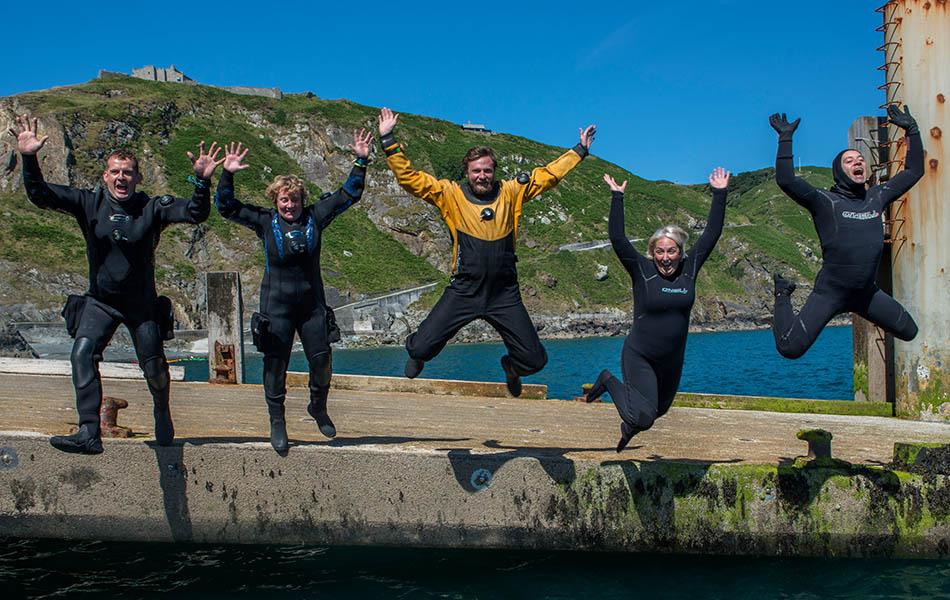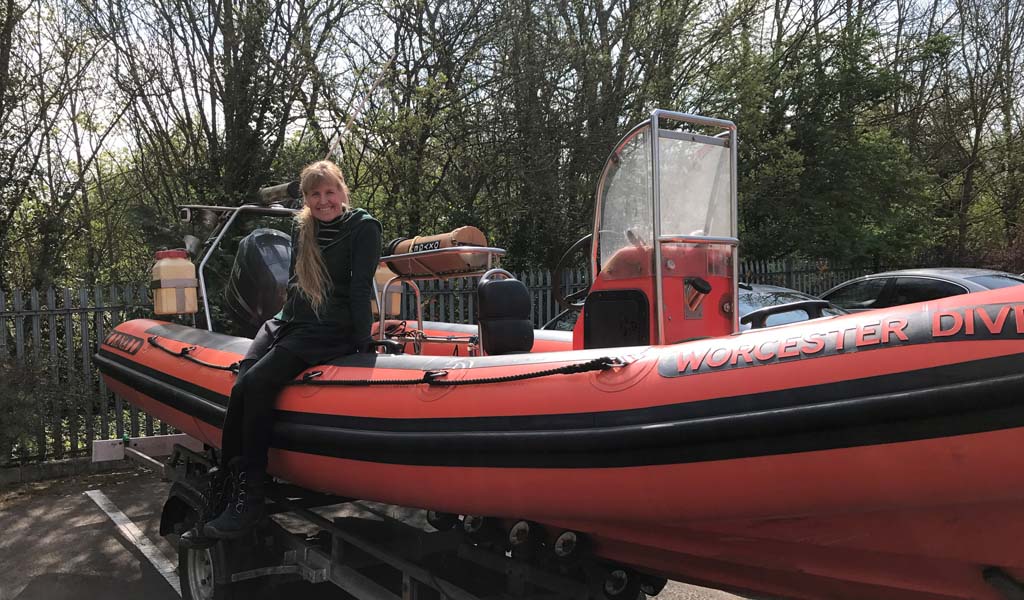
Member, author and photographer Anita Sherwood and her friends from Worcester BSAC choose their Top 10 UK dive sites. Here they are, in no particular order…
The Garland Stone
For me, the Garland Stone captures the imagination. Arrive in June and it’s a scene reminiscent of a David Attenborough documentary. Seals loll over the rocks and puffins flit past every second, heading back to their young on Skomer island. We always arrive an hour before slack and it’s fun looking around at the divers’ faces as they note the huge standing waves rolling past. I’m invariably quite smug as I’ve been here many times and after an hour all goes calm and diving can commence.
I’m lucky to have many treasured memories of this site: from dolphins chasing the rigid-hulled inflatable’s bow wave; to witnessing an explosion of spider crabs on the march to moult and mate. The rock is home to a small seal population, yet it isn’t always the seals that steal the limelight, with octopus often seen tip-toeing across the reef, its hard to know what to look at. Some life is not that easy to spot. It wasn’t until my second dive that I noticed the skeleton shrimp. It was fascinating to watch these communities battle for the top feeding grounds, hunting like praying mantis. This dive is one that will never bore me.
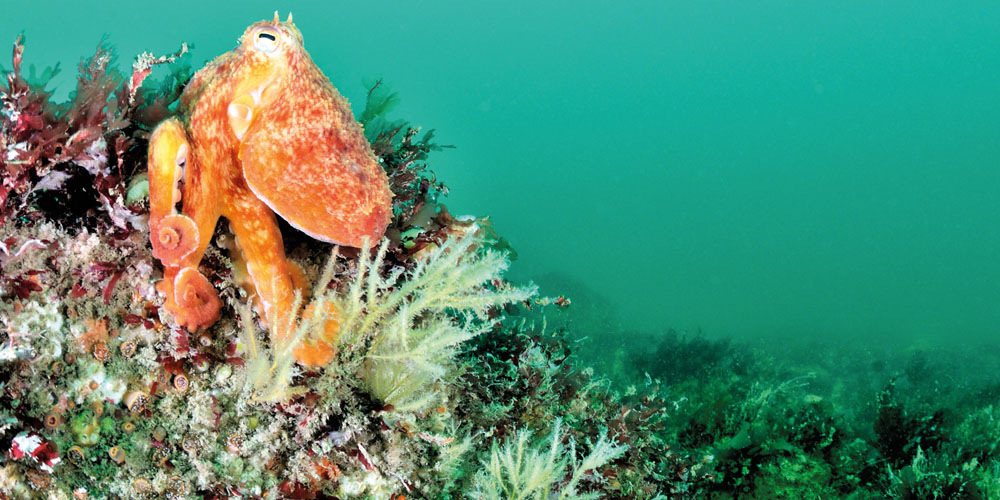
LOCATION: Skomer Island, Pembrokeshire, Wales
DIVE TYPE: Reef / boat dive
GPS: 51°44’48”N 005°17’58”W, 20km from launch at Dale
SLACK WATER: Two to two and a half hours after low water Milford Haven
DEPTH: around 38m
Eilean Donan
I have fond memories of diving in the Norwegian Fjords and for me this is as close as you get in Britain. The visibility is often excellent but the real treat is the incredible wall just dropping down deep, deeper than I would ever venture. The chart says the seabed is at 115m. I often wonder what could live at the bottom of the loch, perhaps a species yet to be discovered. Okay perhaps I’m getting a little carried away, but it is certainly impressive. Swathes of peacock worms coat the vertical drops and overhangs with just the slightest water movement causing them to retract.
I’m still working on my sneak tactics, but it is not always the clumsy diver that spooks them. Poor cod and crabs will also quickly send a whole colony into retreat, with a domino effect. In the shallower depths there are many nudibranchs, and this is a good dive on which to challenge your buddy to locate as many species as possible. Overall this is one hell of a shore dive that you would be hard pressed to beat even with a boat.
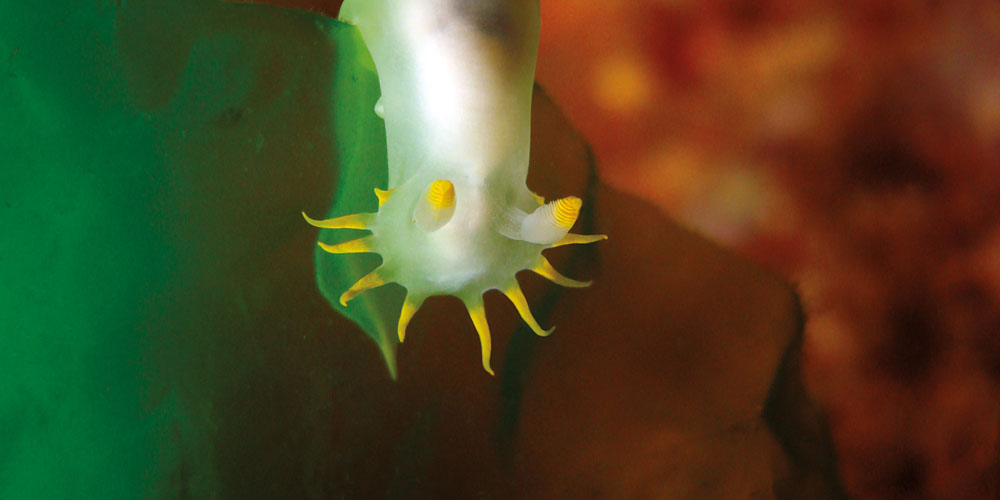
LOCATION: Loch Duich, Ross and Cromarty, West Scotland
DIVE TYPE: Reef / shore dive
GPS: 57°16’03”N 005°30’21”W (Grid ref NG887251)
SLACK WATER: Slight current on neaps, stronger current on springs, proceed with caution
DEPTH: 0 to 50m+
Greenend’s Gully
Greenend's Gully ticks all the boxes for me. A relatively easy entry is always a blessing, there are lots of critters to find and the underwater geology is superb. If ever I’m in the north, I’ll always head here for a dive. It’s even a great option if you are diving the Farne Islands on a day boat, as just a short car journey away this can be your third dive of the day. When I first dived here I got a little confused by all the rocks and gullies on surfacing and good shore cover is ideal for newcomers.
But having been here quite a few times, I can now recognise the gullies and more importantly, the exit point. I don’t think I have ever travelled far on this dive without spotting an interesting critter. Maybe a pogge nestled on a rock or on several occasions I have seen an angler fish hunting with its famous fleshy lure. In the shallows, among the kelp, snake pipefish usually lurk. At the right time of year, the gullies seem to funnel many species of jellyfish into the shallows, also bringing the tiny fish that shelter underneath. To sum it all up, on a calm day Greenend’s gully is simply fantastic.
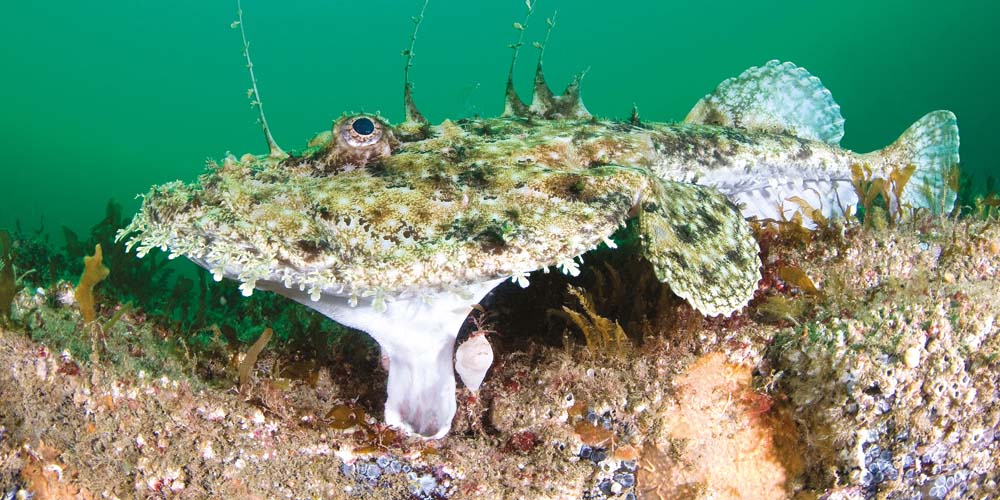
LOCATION: Eyemouth, Berwickshire, East Scotland
DIVE TYPE: Reef / shore dive
GPS: 55°52’31”N 002°04’59”W (Grid ref NT949647)
SLACK WATER: Slight / moderate current at the end of the gully, beware the swell in north westerly, northerly, northeast, asterly and south-easterly winds
DEPTH: 18m
SV Royal Adelaide
This is perhaps a little unusual to list as one of my top dive sites. Yet I'm drawn to the wreck and dive here time and time again. The Royal Adelaide is only a small wreck that you can certainly get around in a jiffy and the shore entry can be a little arduous over the pebbles. I always congratulate myself when I first see the anchor, as being a shore dive, it can be easy to miss.
So why do I love it so much? On a calm day, the sunlight glistens on the oasis of white pebbles approaching the wreck, which looks almost tropical. So many critters come from miles around to this tiny haven. The Royal Adelaide has to be one of the top spots for tompot blennies. They are always eager to greet divers and if you leave a steady hand out, they’ll almost certainly perch on it. On one occasion a tompot popped out of the anchor chain wiggling from side to side almost excited at my presence. Suddenly, a dark object shot past my mask: it was a conger after the blenny. You never know what to expect with this wreck. I have also had the pleasure of spending the entire dive watching a small shoal of triggerfish pass in and out of the Adelaide’s remains, a rare and cherished sight in British waters.
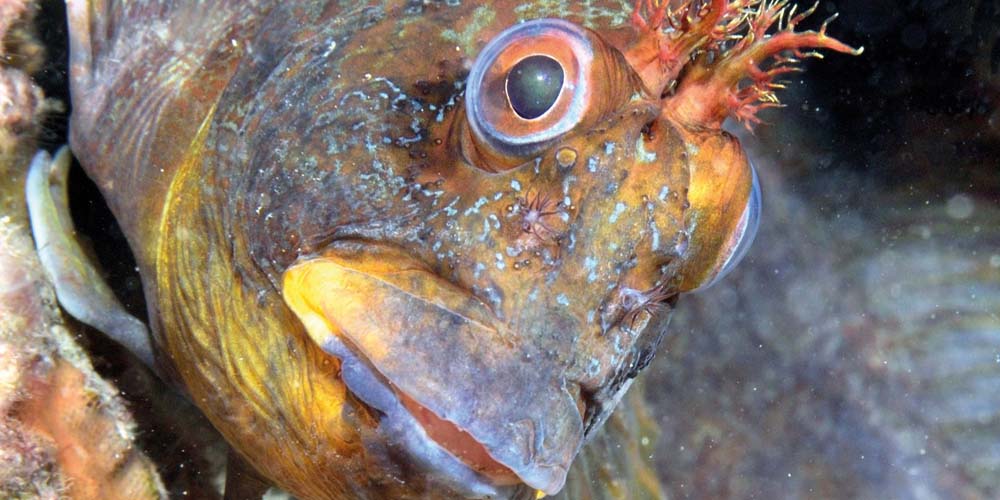
LOCATION: Chesil Beach, Dorset, England
DIVE TYPE: Wreck / shore dive
GPS: 50°34.38N 002°28.09W (Grid ref SY668753)
SLACK WATER: Two hours after high water Portland, at other times the current runs along shore. Anything above a force three or a two-foot swell from the south, south-west, west or north-west precludes diving.
DEPTH: 14m
Loch Carron Slip
Loch Carron will always be my shore dive to top all dives. This area would be my dream place to retire (although I still need to persuade my husband). I have had so many special moments here that it would take too long to tell them all. To start with, this site has the easiest shore entry possible: jump out of the car and you’re on the harbour slip and in the water.
How much better can it get? One of my special moments happened while I was photographing a colourful nudibranch. I felt something nudging me and thought it was my buddy encouraging me to finish the dive, but as all photographers will understand ‘just one more shot’ comes to mind. Well the nudging continued and eventually my mask was obscured by a large object which certainly wasn’t my buddy. A dolphin had been seeking my attention all this time. It spiralled around me completely effortlessly but with a macro lens on all I could do was watch in awe. I later found out that it had been attracted into the bay by the fish farm and had become slightly tame. I haven’t seen it since but I think it was one of the those once in a lifetime moments.
Loch Carron has three dive options but whichever you choose the life is always superb. With flame shell beds and walls of anemones, this is a dive site to treasure.
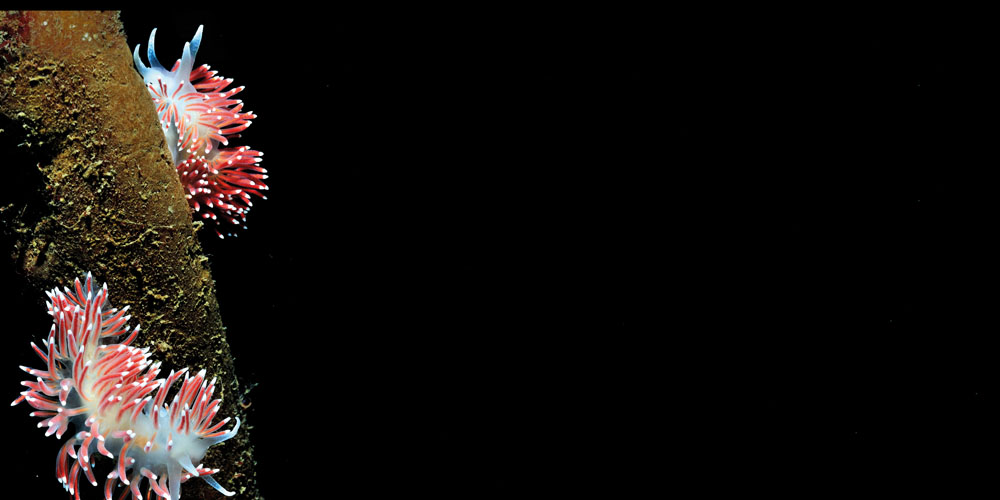
LOCATION: Lochcarron, Ross and Cromarty, West Scotland
DIVE TYPE: Reef / shore dive
GPS: 57°21’32”N 005°33’17”W (Grid ref NG863354)
SLACK WATER: Best dived on neap tides, strong currents on springs
HMS St Dunstan
I first dived the St Dunstan due to a dive-planning mistake. Well, we all have to start somewhere. Heading for the nearby wreck of the Landrail, I hadn’t taken into account British Summer Time and we arrived too late for slack, so we headed for the easier option of the St Dunstan. I remember descending sheepishly on the dive, feeling a little downhearted. At the bottom, the mood instantly changed as we headed under the bow and stared upwards to watch the Blue Planet unfold with huge shoals of fish circling above us. We stayed motionless, mesmerised at the sheer numbers and species of fish. Occasionally we would catch glimpses of beams, embellished with displays of plumose.
Thankfully, everyone raved about the dive. At the time, my main interest was in sea life but since then my interest in wrecks has grown and I see the St Dunstan in a new light. She was built in 1894 for use as a dredger, with large buckets that operated on a conveyor belt. Today you can still head inside and out to see her characteristic large cogs, with one precariously hanging from above. To top an exceptional dive site, this is where a close friend chose to propose underwater to his girlfriend, armed with a dive slate and a few props.
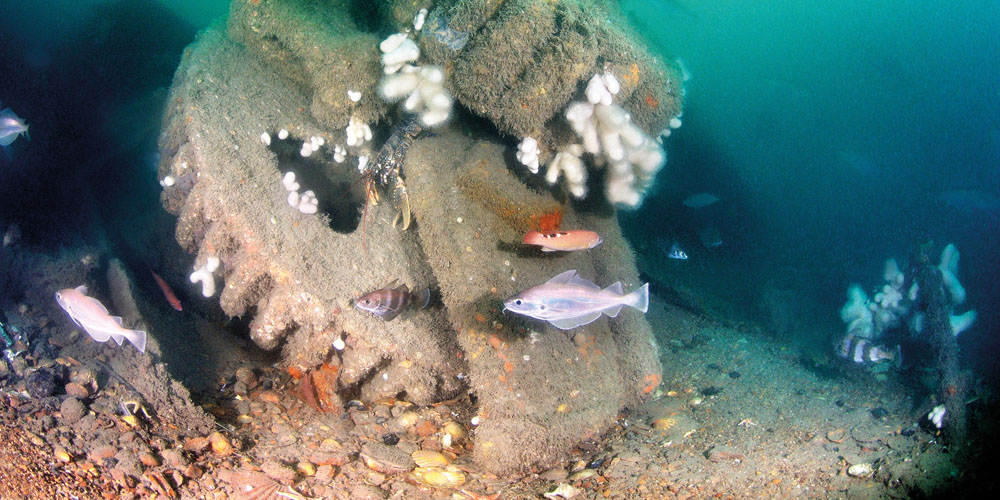
LOCATION: West Bay, Dorset, England
DIVE TYPE: Wreck / boat dive
LOCATION: 50°38.287N 002°42.073’W (midships), nine kilometres from launch at West Bay
SLACK WATER: Three and a half hours either side of high water Portland on springs, or dive anytime on neaps
DEPTH: 29m
Hatt Rock
The jaunt out to Hatt Rock does take a while but it is worth it for the immense feeling of escape from the crowds and of course participating in one of the most spectacular dives in Britain. Hatt Rock is a huge submerged rock, covered in jewel anemones on the grandest scale. The walls drop so steeply that just shotting the reef can be difficult. Although for me this all adds to the excitement.
The visibility is usually magnificent, tempting you ever deeper. This was my first 50m dive and I distinctly remember taking a photo of myself and my more experienced buddy holding up our dive computers. The visibility was the best I have ever seen in British waters and we both cherished every moment. If ever the weather is calm enough and the slack water is good, I always try to persuade our club divers to venture out there and no one ever complains afterwards. With tales of adventure, friendly cuckoo wrasse and Herculean-sized pollock, this is a dive I feel I want to keep under my hat.
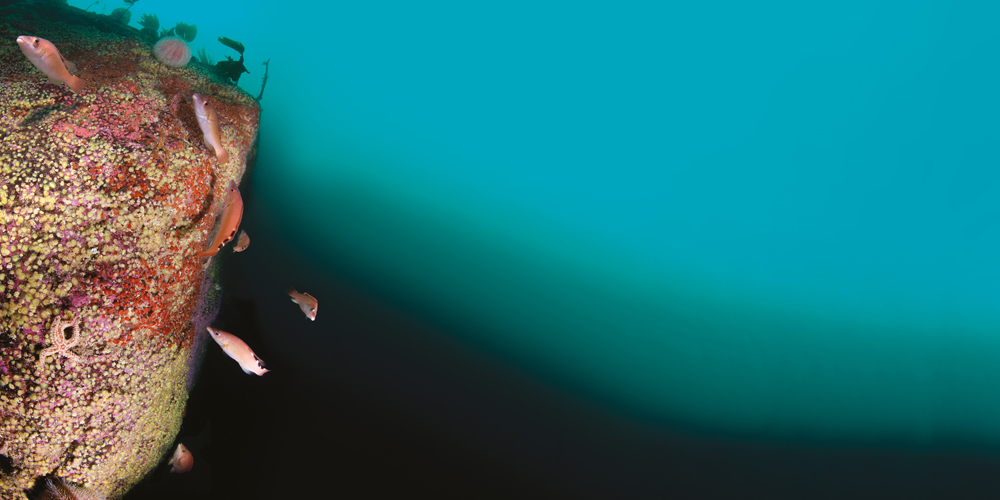
LOCATION: Looe, Cornwall, England
DIVE TYPE: Reef / boat dive
GPS: 50°10.467N 004°29.188W, 34km from launch at Mountbatten
SLACK WATER: Two and a half hours after low water or high water Devonport on springs, dive at any time on a good neap tide.
DEPTH: 25-50m
SS Sphene
The Sphene is a classic steamship wreck located just out from Rock, Cornwall and is often blessed with good visibility. The wreck is just the right length so you that can cover the whole ship without having to put on a sprint and it is shallow enough to be able to have some decent bottom time. Plus it’s not just a pile of unrecognisable plates, which is always a bonus.
I’ll never forget descending down the shot onto the seabed in front of the stern. I remember craning my head up to stare at the impressive view of the propeller, then further up at the ship’s railings. At the time, I was trying to understand the mechanics of a steamship and here it was all displayed so perfectly with a single triple expansion engine, boiler and the steering mechanism, all present. This was where I discovered my love for wrecks.
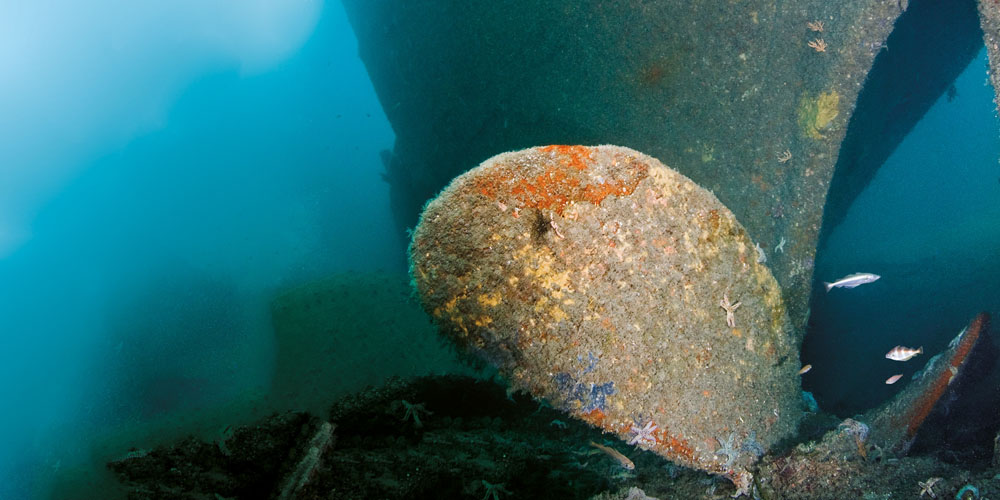
LOCATION: Padstow, Cornwall, England
DIVE TYPE: Reef / boat dive
GPS: 50°36.161N 004°53.165W, 10km from launch at Rock / Padstow
SLACK WATER: One hour after High and low water Newquay
DEPTH: 25m
MFV Fraoch Ban
This is one of my most recent dives, yet I was totally gobsmacked by it. The Fraoch Ban is a newish wreck sinking on 15 August 1999 when in calm seas a cargo of sand eels slipped from side to side and toppled the boat. No one lost their lives. The Fraoch Ban was the last dive of our Shetland trip and one to remember. It was certainly a first for me to be able to see the entire wreck from bow to stern in UK waters, albeit reminiscent of the Red Sea.
The ship certainly had picturesque qualities with wooden decking still in place and the bridge even had some glass windows still intact. Despite the depth of 32m, the wreck is only 15m long, so you have plenty of time to explore. The other highlight of this dive site though was the crowds of plaice that gathered around you on touching the sea floor. Wherever you went they followed. All of us on-board could not believe the dive we had just had. Well if someone said I could only ever do one more dive in the UK, this would be one at the top of the list.
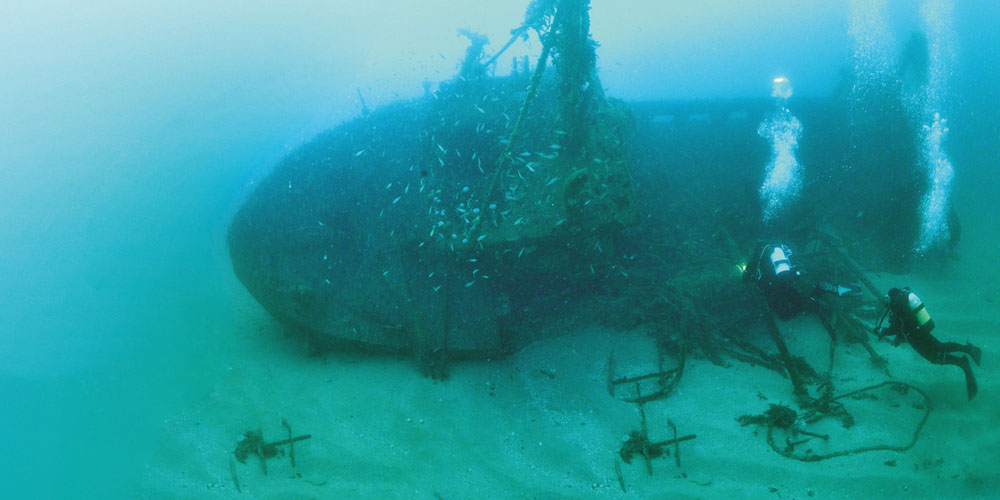
LOCATION: Isle of Noss, Shetland, North Scotland
DIVE TYPE: Wreck / boat dive
GPS: 60°08.186N 001°02.681W, 13km from launch at Lerwick
SLACK WATER: Dive at any state of the tide
DEPTH: 32m
Black Carrs
Black Carrs is one of those sites that is hard to describe in a few words. The scenery is architectural and unbelievable, with sheer-sided gullies narrow enough to dictate diving in single file, and boulder fields filled with life. Plus, of course, the famous local inhabitant, the somewhat ugly wolf fish. I could tell so many stories, but the night dives here are always special. I have to say it used to take a lot to persuade my fellow divers to leave the pub and head out into the cold. Yet these are the times that you don’t forget. The anticipation and excitement was evident in the club RIB, with lots of banter. Torches were checked along with back-up torches and lights attached to our surface marker buoys.
The dive is great in the day but at night it is transformed into something amazing. After just minutes on the bottom, creatures of the deep would head towards our lights to help them hunt, particularly octopus and squid. Crabs and squat lobsters would be out on the prowl, confident of the cover of darkness. I remember the end of the dives distinctly; the beauty of jellyfish and the dazzling colours of the comb jellies were astounding. Time stood still as we surfaced under the moonlight.
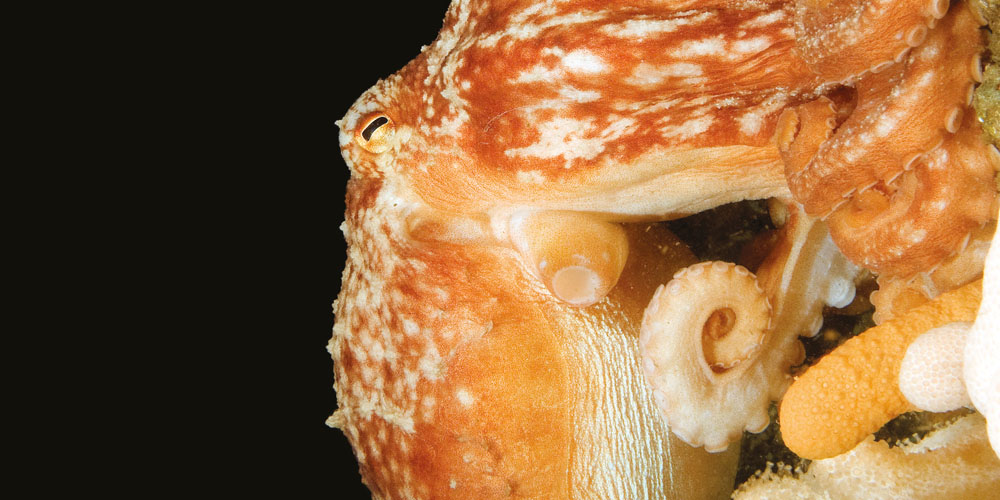
LOCATION: St Abbs Head, Berwickshire, East Scotland
DIVE TYPE: Reef / boat dive
GPS: 55°54.538N 002°07.644W, one kilometre from St Abbs
SLACK WATER: Dive at all states of tide on neaps, or drift dive on springs (surface marker buoys essential)
DEPTH: 25m
This UK Diving article was originally published in SCUBA magazine, Issue 100 March 2020.
Anita is also author of two beautifully illustrated, authoritative guides to UK shore diving, find out more.

 Author: Anita Sherwood | Posted 15 May 2020
Author: Anita Sherwood | Posted 15 May 2020



